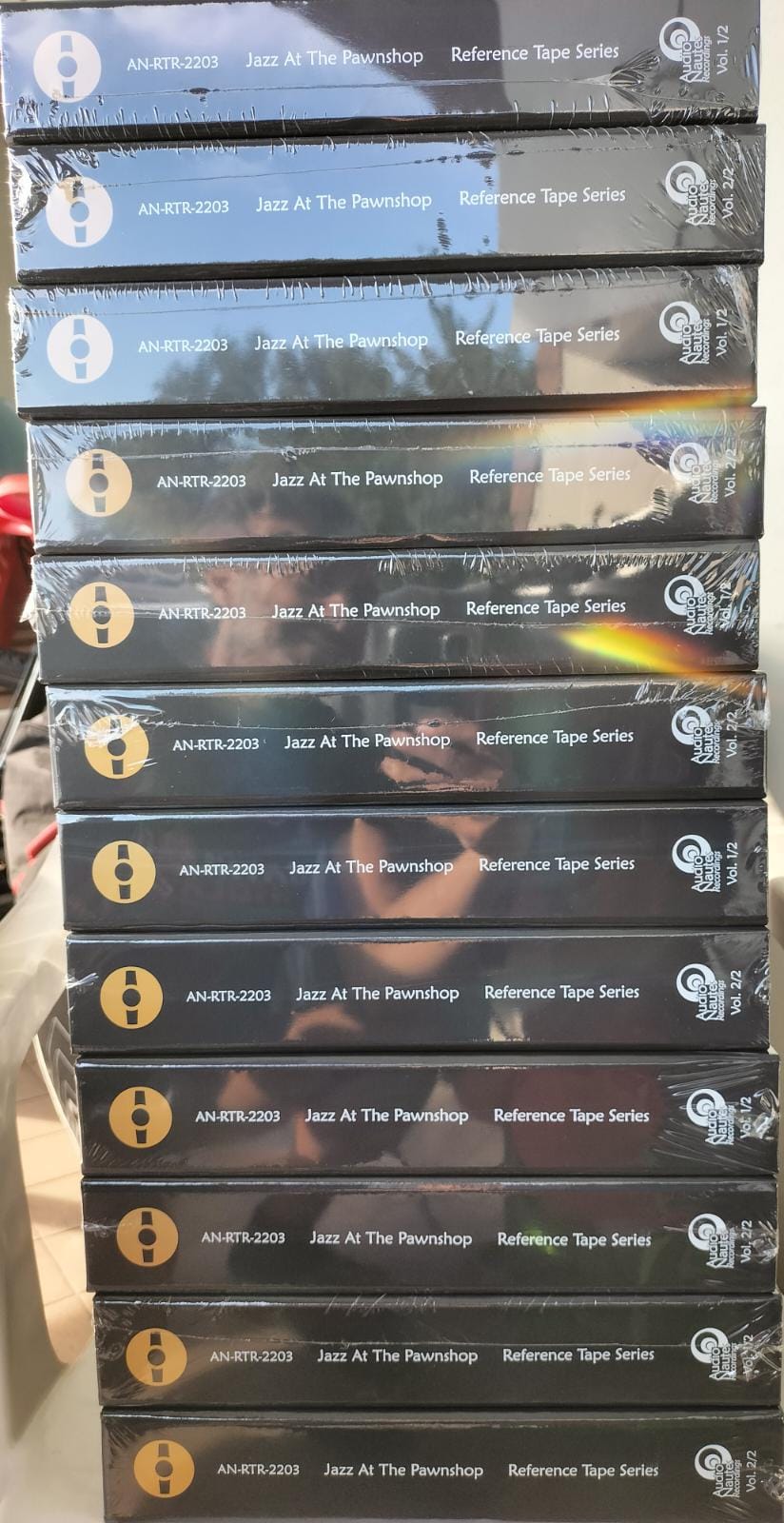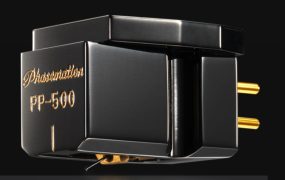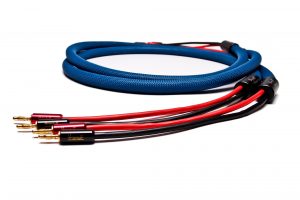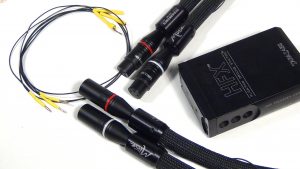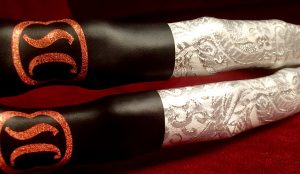
In some ways, Mark Pearson and I are birds of a feather. Among other things, we're both extremely picky and demanding about the performance of audio equipment. Not every component is the best thing since sliced bread nor is the last component the best component we've heard (or like HP always did—and few caught on—leave yourself some wriggle room). So that's why I, when Mark emailed me about these new speaker cables that were turning his world upside down, had to by hook or crook wrangle a listen to these new Viero cables out of Italy. So with all due apologies to Mark for ripping the cables out of his system and absconding with the magic they imparted to his system, here's my experience and thoughts on the Viero Equilibrio Level 3 Speaker Cables.
Mark's recent review of these Italian designed and manufactured Viero Equilibrio L3 speaker cables (see his review in Positive Feedback) was spot on. He nailed the sound (or lack of sound) of these speaker cables on the head and there's simply no, zero, nada question that these cables cause less harm to the audio signal than practically any speaker cable that has flowed electrons through my system. The Viero's musical shadings, inner detail and low level resolution are simply unlike any other cable. Sonically, these cables share much in common with the top tier MIT cables—namely that neutrality, quietness, dynamics, low level resolution and with excellent recreation of the recording space—but with far more body, soul and musicality.
No record is a better test of the Viero Equilibrio L3 speaker cable's mettle than the "Third and Fourth Movements" from Howard Fetler's Contrasts for Orchestra (Mercury 90282). As Paul Fetler wrote in the album's linear notes, "This composition features contrasts of every sort…. Thus we have contrast in texture, expression and mood used as formative elements in the shaping of the work itself." For instance, the very first attribute that the Viero speaker cables reveals about the composition is the pieces dynamics and ease of dynamic swings. One appreciates more than ever both the ability of the George Piros as Tom Fine refers to it, "to make a dynamic cut," and the dynamics that Robert Fine so masterfully captured on this recording. In fact, the cable even shows up more of the recording's congestion at louder listening levels. Then there's the recording's low end. The Viero mates ever-so-well with the Magico S5s and really highlights the speaker's bass linearity, dynamics and lack of overhang or bloating. Bass and tympani, especially on the "Fourth Movement" have far more impact, control and extension especially with the Audia Flight Strumento No. 4 amplifier driving the Magico S5s. Once those characteristics settle in, then the cable's spatial recreation, especially the depth of the soundstage, take over. Finally there's the speaker cables' ability to accurately reproduce the tone and delicacy of instruments. Listen to the decay on the percussion or bells. Listen to the lightness and delicacy of the pizzicato in the second movement. Listen to the trumpets soar above the orchestra without hardness. Everything just sounds so natural. Where the Vieros fall ever so short of ultimate on this Mercury recording is in an ever-so-slight reduction in the sense of ambient space.
Reductionism aside, the Viero Equilibrio L3 speaker cable possess that ever so elusive and rare ability to magically breathe life into the music. That ability—just as Fetler strove in his compositions—to engage the audience. Yes as we all know, there are high-end audio components and then there are high-end audio components. Yes, there are components that measure perfectly and then there's components that play music. Yes, there are days where the system sounds like a million dollars and other days when the system isn't worth a plugged nickel.
Now what exactly is afoot and responsible for the Viero Equilibrio L3's musical magic? Got me on that one. I've mulled that question over and over in my mind and found it nigh impossible given the oh-so-many things that the cables do correctly, to put my thumb on any one area responsible for Viero's magic. The Vieros noise floor, overall tonal balance and frequency extension, dynamics, speed and delicacy just bring the music together and make recordings seem more human than mechanical. ThrowingElvis '57, Vol. 2 (RCA/Analogue Productions APP 057-45), one the best vinyl reissues ever in my book on the VPI, further illustrates the Viero cables musicality. For the very first time on the raw uncut take of "Have I Told You Lately That I Love You, Takes 12,13" there's an ability to hear and now understand exactly what the Jordanaires are arguing about among themselves in the studio after flubbing the song. For the first time, there's an eerie ability on "Peace in the Valley, Take 7" to decipher more of the nuances and inner detail present in Elvis's voice. Not only is Elvis in the room but there's an uncanny sense of immediacy along with the minutest intonations of his voice (for an alternative take—and yes I know it's a digital redo—throw Neil Young's Live at the Cellar Door on the table). Not to mention the tones of the guitar and piano are splendidly rendered replete with all the instrument's overtones. And as Mark astutely pointed out, not because of an artificial rising top end.
In case you didn't realize by now, Mark and I share another thing in common. We're both dyed-in-the-wool analog junkies (though a review of the new Scaena Mainframe Music Processor and iFi nano DAC that does up to 8X DSD along with some tape vs. 4X DSD transfers are in the pipeline) and both of us auditioned the cables using a mix of both 15-ips, 2-track tapes and LPs. In addition, the speaker cables were also evaluated using either my long time reference conrad-johnson ART tube amplifiers or the newly arrived Audia Flight Strumento 4 stereo solid-state amplifier (that are currently being reviewed for AVShowrooms.com) driving the Magico S5 speakers. With the connie-j ARTs anchoring the system, the Viero Equilibrio L3 brought to the fore the amplifier's simply exceptional low level resolution, dynamic shadings, delicacy and holography; hooked up to the massive 250 pound Audia Flight Strumento 4, the speaker cable accentuated the amplifier's effortlessness, liquidity and low end extension. The very best recordings (or even average recordings) such as my new reference 15-ips tape Suryodaya from Yarlung Records took on an entirely new life and meaning. The Viero cables never ceased to amaze with their ability to capture the magic of Milstein's Strad as well as the feeling of the bow pressing against the strings. Even more impressive is the purity, clarity, airiness and delicacy of percussion instruments such as the bells. Dynamics just flow without any restrictions. The speed of Roy's hands striking the tablas as well makes one dizzy.
Italy is known for oh-so-many things. Art. Music. Culture. Fashion. Food.Wine. Sports cars. Musical instruments. (crazy political system.) Now add to that list of items the Viero L3 Equilibrio speaker cables. The Viero cables mark an auspicious debut for a brand new audio company and its young designer Devis Viero. The cables are simply magical and integrate wonderfully with both solid state or tube amplifiers. More importantly, the Viero cables really met the criteria of cables being seen and not heard. My long term reference conrad-johnson ART amplifiers never sounded so good. The Magico S5s, a somewhat more recent addition to the reference system, likewise took another forward with their resolution, finesse, dynamics and low end capability. It might be hard to believe but I'm even more enthused than Mark about what the L3s bring to the sound of my big rig. While not inexpensive, the performance of the Viero L3 Equilibrio speaker cable on a par with the best today's cables. Now I just wish Devis would send Mark the cables he ordered so that I don't have to hear Mark's whining anymore about how his system has taken five steps backwards after sending me the review pair for comment!
Technical Highlights

Designer Devis Viero is a very talented, twenty three year old high-end audio cable designer from Italy. Devis wears many hats and is currently a sound technician and physical engineering student (now who was it that said that audiophiles are a dying breed) as well an aspiring musician and music producer. When Devis isn't busy building cables or amplifiers or working in the studio, he usually can be found playing his guitar or electric bass as well as a few other instruments.
In hindsight, one might say that being the son of a diehard audiophile who owned two turntables, eight cartridges (and you can imagine the rest) doomed Devis from the very beginning. Devis' began playing with those little speakers in TV sets at the young age of five. TV sets progressed to building his own little amplifier to currently working in a recording studio helping record different country bands and classical groups. During this time, Devis observed that recordings rarely sounded like the actual instruments. "I am a musician," he shared, "so every time I try to compare with real instruments." Long story short, he found that the quality of the cables used in the studio had a dramatic impact upon sound of the recorded instruments.
Devis' design philosophy is summed up in four words: less cable, more music. Furthermore he added, "music is an event in space and time, not just an electrical impulse. To create this cable," Devis recounted, "I tried with every change to listen to the acoustic instrument, and then played back with my cable until I couldn't distinguish whether the cable was connected or there it was. This was repeated with a variety of instruments such as the violin, guitar, piano and sax. It took a while but this is my passion!"
One person who was particularly inspirational and served as both a friend and mentor to Devis was cable giant (and overall friend to the industry) George Cardas. George, along with some other collaborators with over thirty years of presence in the audio field, assisted Devis with the both the design of his cable as well as the ins and outs of the business side of the industry. Finally after six years in development, Devis felt his cables were ready for prime time. Viero Cables officially opened their doors selling pro audio cables back in 2011 in Australia and released their first high-end audio cable back in October of 2013.
All Viero cables are fully shielded with three shield layers using ultra-pure OFC and OCC silver braided, solid-core; indeed Devis credits this technology with the cable's silence, speed and dynamics. The wire is sourced from a company in Germany that specializes in premium metals such as gold, silver, copper, nickel, rhodium, etc. (same silver used by Tiffany). In part it's the 20 mm thickness of shielded layers along with 2.4 Kg. each of silver and copper in the 5 meter speaker cables submitted for review that contribute to the L3's cable's relative stiffness and weight.
Construction of the L3 cables begins with a silver plated/braided ultrapure OCC (ohno continuous cast wire; see summary HERE) copper cables). "My cables are made with unique materials and in a unique way that no one else uses." In addition, the Viero speaker cables use Helifax (Technology Isolation dielectric), a composite insulating material created and invented by Viero cables. The speaker cbles have received two patents and one more for the Helifax is pending. The cables are terminated with 24K gold/tellurium composite spade lugs.
Another important aspect of the cable design is the new and patented, "multi-pulse" geometry. Devis developed this technology to, "provide a comprehensive solution to the audible losses of cables." Devis explains, "essentially, signals are moved through cables by electromagnetic field energy vibrating electrons in the conductors. To minimize electromagnetic losses, including skin effect, the multi-pulse conductors are as thin as a single strand. This design entails," he adds, "1) Sophisticated geometries that make the conductors particularly insensitive to interference of electromagnetic waves and the skin effect; 2) Accurate multi-shields made with different conductive materials for protection from EMI and RFI emissions; 3) Particular care in constructive methodology and the use of materials of interposition in order to reduce to a minimum sensitivity to vibrations; and 4) The cables are built entirely by hand to realize the design's potential ." Myles B. Astor
Equilibro Level 3 Speaker Cables 3.5 Meters
Retail: $8128
Viero Cables di Devis Viero
Italy - VAT: 02550040022
www.vierocables.com
[email protected]
Phone: (+39) 331 320 342






